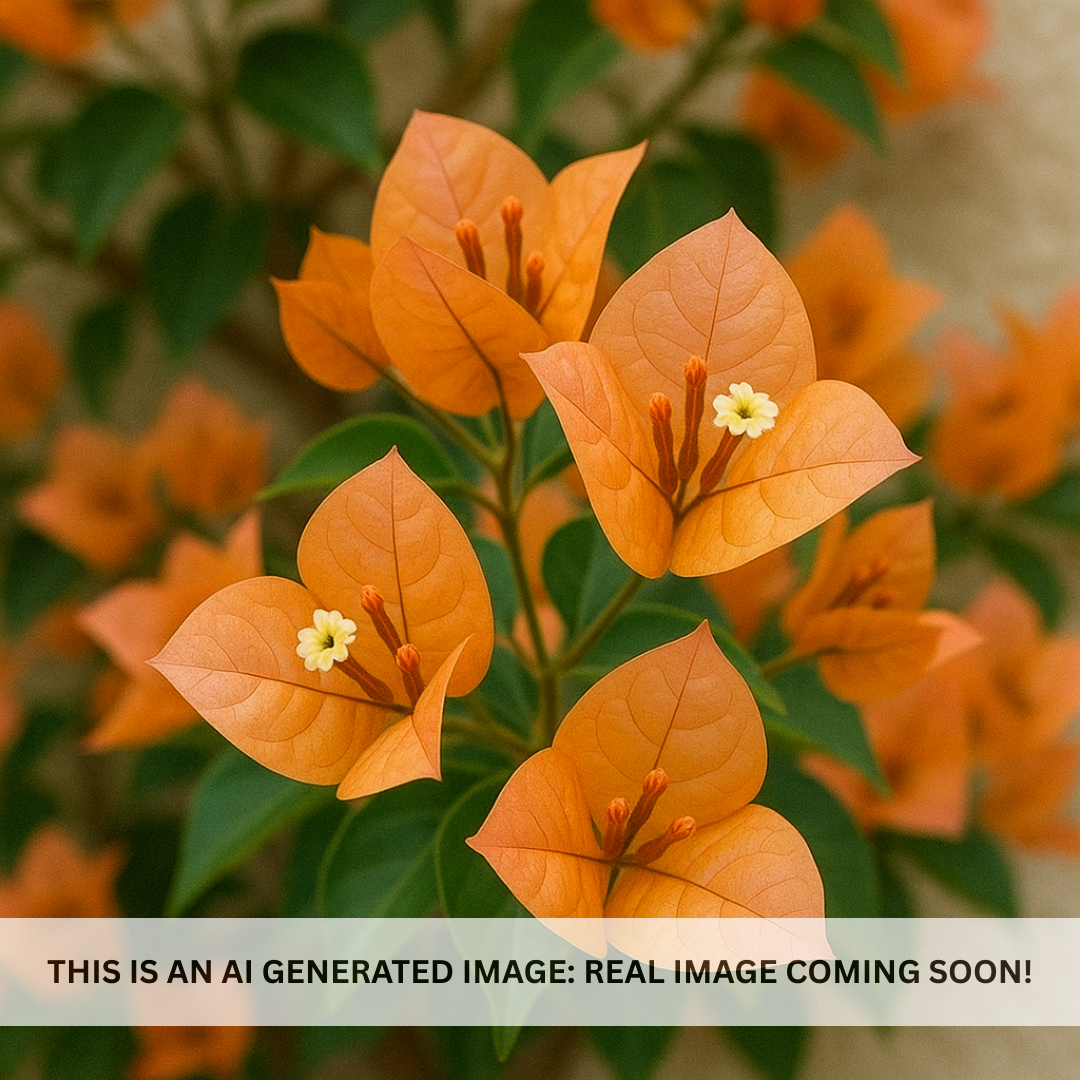My Store
Rosenka Bougainvillea Espalier
Rosenka Bougainvillea Espalier
Couldn't load pickup availability
Plant Type: Evergreen Vine/Shrub (trained as espalier)
Plant Height: 8-12 feet (trained size depends on support)
Spread: 6-10 feet
Flower Color: Peach, apricot, and pink bracts with tiny white flowers
Sun Exposure: Full sun
Rosenka Bougainvillea Espalier: Warm Tones with Tropical Flair
The Rosenka Bougainvillea (Bougainvillea ‘Rosenka’) is a vibrant, warm-toned variety prized for its bracts that shift from peach to apricot to pink as they mature. When trained as an espalier, Rosenka transforms plain walls and trellises into dramatic living artwork. Perfectly adapted to Arizona’s hot, dry climate, this variety brings tropical beauty, resilience, and a long bloom season to the Phoenix Valley.
Key Features of Rosenka Bougainvillea Espalier
- Multicolored Bracts: Bracts emerge in shades of peach and apricot before maturing to pink, creating a dynamic, ever-changing display.
- Espalier Form: Grown flat against trellises, fences, or walls for a formal, space-saving design.
- Heat & Drought Resistant: Thrives in full sun with very little water once established.
- Extended Bloom Season: Provides color from spring through fall, often blooming in cycles.
Growing and Care Tips
- Soil: Well-drained soil is essential; amend clay-heavy areas with compost or sand.
- Water: Moderate water during establishment; low water needs once mature.
- Pruning: Light trimming after bloom flushes keeps espalier neat and encourages fresh growth.
- Cold Tolerance: Hardy to around 30°F; frost may damage foliage, but plants typically regrow in spring.
Landscaping Uses
- Espalier Walls: Adds warm, tropical color and texture to plain walls or fences.
- Entryways & Courtyards: Creates a bold vertical accent in high-visibility areas.
- Accent Plant: Stunning when paired with desert plants for a splash of color contrast.
- Containers: Can be grown in large pots with trellis support for patios and small gardens.
Summary
The Rosenka Bougainvillea Espalier delivers a unique blend of peach, apricot, and pink tones in a space-saving, formal design. Hardy, drought tolerant, and long-blooming, it’s an excellent choice for Arizona homeowners who want bold color and elegance in their outdoor spaces.
Three Timbers Installation Guide (Feel Free to Follow):
Rosenka Bougainvillea Espalier Planting Guide
Location: Full sun (minimum 6 hours daily) for maximum flowering.
Soil: Well-drained soil; amend heavy clay with sand or compost.
Spacing: Plant 6-10 feet apart along walls or trellises.
Planting Depth: Place root ball level with surrounding soil; firm gently.
Support: Train against trellis, wire guides, or masonry for espalier growth.
Watering Guide
Watering After Planting:
- Initial Watering: Deeply water immediately after planting.
- Frequency: Every 2-3 days for the first 2 weeks, then weekly for 2-3 months.
- Amount: Provide 3-5 gallons per watering depending on plant size.
When is the Plant Established?
- Timeframe: Typically 6-9 months in warm Arizona conditions.
Watering Once Established:
- Summer: Deep water every 10-14 days. Increase to weekly during extreme heat for stronger blooms.
- Winter: Water every 4-6 weeks if rainfall is lacking.
Drip Irrigation Setup:
- Placement of Emitters: 12-18 inches from the base, along espalier training line.
- Flow Rate: 1-2 gallons per hour emitters recommended.
- Number of Emitters: 2-3 per plant for balanced coverage.
- Adjusting Frequency: Increase during bloom cycles or heat waves; reduce in winter.
General Watering Tips for Rosenka Bougainvillea Espalier
- Soil Check: Water when soil is dry 3-4 inches deep.
- Encourage Blooms: Allow mild drought stress between watering cycles to promote heavy flowering.
- Avoid Overwatering: Excessive water encourages foliage at the expense of blooms.
- Mulch: Use gravel or rock mulch to conserve moisture and showcase the plant’s warm-toned bracts.
Share














